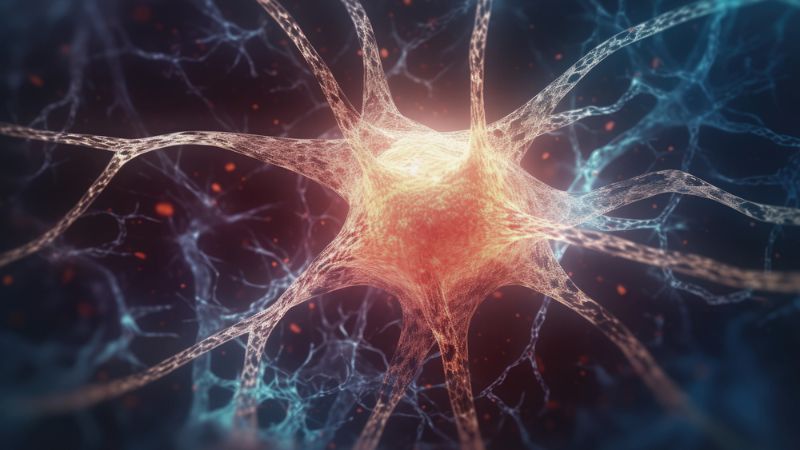The human brain is incredibly powerful—and surprisingly adaptable. It constantly changes and reorganizes itself in response to new experiences, thoughts, and behaviors. This ability, known as neuroplasticity, plays a major role in how we learn, grow, and heal.
In recent years, Transcranial Magnetic Stimulation (TMS) has gained more attention. It’s a non-invasive brain stimulation therapy used to treat depression, anxiety, and other conditions. TMS is especially promising because it works with the brain’s natural ability to change—called neuroplasticity.
Questions Answered in This Article:
Our Alcohol Addiction Treatment Programs

Scottsdale Rehab
Luxury Personalized Rehab

Hart Rehab
Holistic Luxury Personalized Rehab

Scottsdale Detox
Luxury Medical Detox
What Is Neuroplasticity and Why Does It Matter?
Neuroplasticity is the brain’s natural ability to change, adapt, and grow by forming new connections between neurons. These changes happen throughout life and are essential to how we learn new skills, form memories, and recover from injuries. Every time we practice a habit, think a thought, or experience something new, the brain physically changes its wiring in response.
This flexibility allows the brain to compensate for damage, adjust to new environments, and support emotional healing. In fact, neuroplasticity is what makes long-term recovery from mental health conditions possible.
However, for people with depression symptoms, anxiety, or other long-standing mental health disorders, this adaptive process can slow down or become disrupted. Certain pathways in the brain—especially those related to mood, motivation, and decision-making—may become underactive or rigid. In these cases, the brain has trouble breaking out of negative patterns on its own.
That’s where treatments like Transcranial Magnetic Stimulation (TMS) can help. As a neuroplasticity treatment, TMS works by using gentle magnetic pulses to stimulate key areas of the brain involved in emotion and behavior. Over time, this stimulation encourages the brain to strengthen healthy connections and weaken those that contribute to harmful thought patterns. It helps reawaken parts of the brain that are stuck or inactive—offering a chance to restore balance, improve function, and support long-term healing.
By working with the brain’s natural ability to rewire itself, TMS offers more than just short-term relief—it supports real, lasting change.
How TMS Works with the Brain’s Natural Systems
TMS and neuroplasticity go hand in hand. During a TMS session, a TMS coil is placed on the scalp to deliver magnetic pulses. These pulses stimulate nerves in targeted parts of the brain. The resulting electrical field reaches through the skull and affects brain activity—without surgery or medication.
Much like magnetic resonance imaging (MRI) technology, the magnetic coil used in TMS is safe and controlled. However, instead of imaging the brain, it aims to activate underperforming brain circuits. Over time, this stimulation can lead to long term potentiation (LTP)—a process associated with learning and memory—or long term depression, depending on the goal of treatment. These mechanisms are central to how TMS changes the brain’s connections.
TMS and the Science Behind Brain Connectivity
One of the most fascinating aspects of TMS therapy is how it interacts with the brain’s communication networks. Every thought, emotion, or movement we experience involves electrical signals traveling between neurons across different parts of the brain. When these pathways are disrupted—as in depression, OCD, or other mood disorders—symptoms begin to appear.
TMS helps by targeting specific brain regions involved in emotional regulation, like the prefrontal cortex. Using a TMS coil, magnetic pulses stimulate neurons and encourage them to “fire” in healthier patterns. Over time, this process may restore more normal brain functions, enhancing how different regions communicate with one another.
This neural rewiring aligns with what researchers call long-term potentiation (LTP) and long-term depression—two essential processes in neuroplasticity. LTP strengthens important connections, while long-term depression weakens those that may be unhelpful. Both are important for mental health recovery and brain adaptability.
TMS Therapy for Mental Health Conditions
Initially approved in the United States for major depression, TMS therapy for mental health has expanded to treat various conditions, including obsessive compulsive disorder (OCD), chronic pain, and even some forms of anxiety. For patients who have not responded to medications or more intensive treatments like electroconvulsive therapy (ECT), TMS presents a non-invasive alternative.
This treatment option is especially valuable for those with treatment resistant depression, where the usual pharmaceutical route has failed. By stimulating the prefrontal cortex—an area closely linked to mood regulation—TMS helps reboot dormant or inefficient pathways within the human brain.
What Are the Benefits of TMS Therapy?
Some of the most common TMS therapy benefits reported by patients include:
- Reduction in depressive symptoms
- Improved mood and motivation
- Enhanced focus and cognitive clarity
- Fewer side effects compared to medication
- Long-term improvement with sustained sessions
These outcomes occur because of how TMS treatments promote neural plasticity and healthier brain functions over time. While every patient responds differently, many experience meaningful changes in both mood and daily functioning.
Who Can Benefit Most from TMS?
TMS is not a one-size-fits-all solution, but it’s shown great promise for people who haven’t responded to standard treatments. If you’ve tried multiple medications or types of therapy with little improvement, TMS may offer a different path forward. It’s especially suited for people with treatment resistant depression, but it’s also being explored as a tool for managing other complex conditions.
Aside from obsessive compulsive disorder (OCD) and chronic pain, studies are now looking into its effects on PTSD, addiction, and cognitive disorders. Because it’s a non-invasive brain stimulation option, patients often report fewer side effects than with medications or more aggressive treatments like electroconvulsive therapy (ECT).
While not yet considered a first-line treatment, TMS is growing in popularity across the United States and other parts of the world. As more research supports its use, it may become more widely available as a first-choice treatment option for a range of disorders involving the brain.
Why Brain Stimulation Therapy Is a Game-Changer
Unlike traditional treatments that rely on altering brain chemistry through medication, brain stimulation therapy acts directly on the neural pathways themselves. It gives clinicians a way to stimulate nerves and improve connectivity without systemic side effects.
TMS is also considered a non-invasive brain stimulation method, meaning no anesthesia or hospitalization is required. Sessions are usually brief, and patients can return to regular activities immediately afterward.
The Future of Brain Health and Healing
How TMS changes the brain is rooted in its ability to guide the brain toward healthier patterns using its natural plasticity. As a scientifically backed, non-drug solution, TMS is becoming a preferred choice for those seeking alternatives to conventional therapies.
Whether you’re exploring a new treatment option for yourself or a loved one, understanding the relationship between TMS and neuroplasticity is key. It’s not just about symptom relief—it’s about rewiring and healing the brain for lasting mental wellness.

